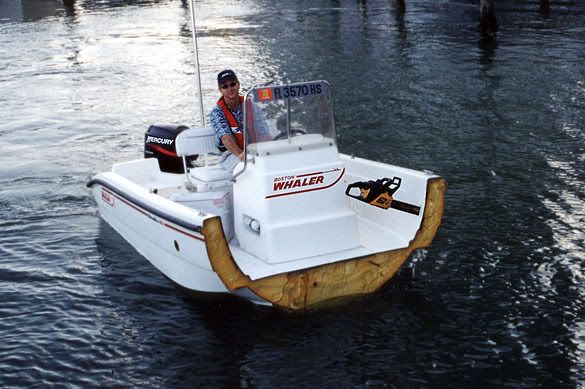Re: What's this glue type bondo stuff searay have used to fix my stringers to the hul
UK makes it tricky to recommend products
PL Premium, it's like Liquid Nails but better. TiteBond III (3) is a water based glue that is waterproof once it cures. Or, are you familiar w/ Gorilla Polyurethane glue? You'll want to make sure that you secure the 2pcs of stringer together very well. I'd use any of these products & clamps to glue them together, rather then staples or screws.
Are the stringers longer then 8' per? Or wider (thicker) then 3/4" in total width?
It actually just occurred to me that you might mean to attach stringers to each other or the bulkheads as they intersect one another when you install them into the hull.
Plywood will draw the 1st coat of polyester resin and away from the 1st layer of fiberglass cloth. The cloth will also do that, starving the plywood, resin, fiberglass bond to be weaker. So yes, generally speaking, most folks do apply resin & fiberglass to the stringers 1st, prior to installing them. You'll roll resin out onto the stringers, allow it to slightly tack off & then apply more resin & a layer of 1.5oz CSM (here that's Chopped Strand Mat) to all edges & sides of the stringer. This way it's sealed prior to install & the subsequent layers of resin & cloth make it more so. If you run some finish nails or drywall screws thru a board, you create some pin points to lift the stringers off your work surface & allow you to coat both sides & all the edges in just about 1 work session. When working with resin & cloth, you can do multiple layers 1 right after the other, wet on wet. Be mindful of the fact that multiple layers speed up the curing process, this generates heat. And you don't want to speed cure/cook the resin either, that makes it brittle. Until you have mixed & used some resin & cloth, some of that may be unclear, and you will use more resin & more cloth then you expect until you get very familiar with it & how much, how fast you can work with it.
And temperature of the surface to be fiberglassed, air temperature, humidity, the temperature of the resin, and the percentage rate of MEKP (the catalyst) added into the resin, all change the speed at which the resin kicks off & cures. Before starting to mix resin & MEKP, you can slow the cure by keeping the resin refrigerated/cold until needed, when it's hot outside. And using space heaters to warm the surfaces to be glassed and keeping the resin inside or warm will speed up the cure when it's cold outside. Just be very careful , as resin & acetone are flammable.
Watching Friscoboaters YouTube & iboats thread videos helped me understand it a great deal.




















